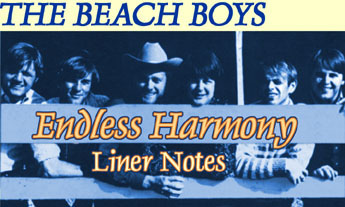

Brian Wilson and his younger brothers, Dennis and Carl, had been harmonizing at home on popular standards for years. Their cousin, Mike Love, joined in at larger family gatherings. And when another voice was needed to fill out the sound, Brian recruited fellow college student Alan Jardine. But when sometime surfer Dennis suggested to Brian that he should write a song about the new surfing craze, none of them had any idea what it would lead to.
The song, simply titled Surfin’, attracted the attention of a local producer, and the boys found themselves making a record. Carl and Alan already played guitar, Brian picked up the bass, Dennis found himself behind the drums, and Mike was nominated the lead singer. When Surfin’ became a hit in L.A., the group that had been renamed The Beach Boys by their first record label were set on a course that would impact popular music for many years to come.
Success came quickly – headlining local gigs, then a contract with Capitol Records, and in the fall of 1962 a Top 20 national hit with Surfin’ Safari. They became masters at harmony-laden blasts of good time rock ‘n’ roll, spinning out hit after hit under the direction of pop whiz kid Brian Wilson. Surfin’ U.S.A., Shut Down, Little Deuce Coupe, Fun Fun Fun, the list went on and on.
Brian followed Pet Sounds with a single he called a “pocket symphony.” It took him six months to record, producing several distinct sections which he spliced together to achieve the effect he desired. And the instruments he used – Jew’s harp, cello, harpsichord, theremin – had never been heard on a rock single before, at least not like he used them. But when he was finished, Good Vibrations and its hints of psychedelia went to #1 on charts all over the world. Thirty-one years later, another poll of rock’s leading participants named it the “Greatest Single of All Time.”
Never willing to rest on their laurels, Brian and the Beach Boys continued to explore the uses and limits of vocal harmony in the latter half of the Sixties. Heroes and Villains offered a rock equivalent to the barbershop quartet, Darlin’ saw them place their sound in a rhythm-and-blues context.
As the group moved into the Seventies, all of its members began to stretch their creative wings; Brian was not the only songwriting and production talent in the group. Alan’s Loop De Loop was a sonic tour de force, with biplanes buzzing overhead, crowds exclaiming in awe, and circus-like sirens setting the mood. Carl demonstrated on I Can Hear Music that he had mastered the nuances of the Phil Spector school of production that had so influenced Brian, then turned around and crafted the dynamic “never give up” anthem, Long Promised Road, as his songwriting debut. Dennis reached deep into a reservoir of intense emotion for a series of songs that were nothing less than personal cries from the heart; the unreleased Barbara was one of several he wrote about his second wife.
In the mid-Seventies, the group’s touring show was being hailed as one of the best in rock music. Rolling Stone magazine named them Band of the Year in 1974, based solely on their live shows. Their dedication to touring guaranteed them an audience for years to come.
By the end of the Seventies, the Beach Boys could look back on their successes and legacy and celebrate them with songs like Endless Harmony, written by Bruce Johnston, who had replaced Brian on stage in 1965, and Mike Love’s Brian’s Back, featuring a gorgeous chorus vocal from his cousin, Carl.
In 1983, the group was dealt a devastating blow, when Dennis Wilson, the group’s true child of the sea, drowned in the Pacific Ocean while diving off a boat dock in Marina Del Rey. Presidential permission was sought and obtained to allow Dennis to be buried in the sea he loved so much.
Despite their loss, the group elected to continue, feeling they still had something to give to the public. And in 1988, they scored a #1 hit with the Caribbean-flavored Kokomo.
The group continued to tour and play for their thousands of fans on into the Nineties. Then, in February 1998, Carl Wilson succumbed to lung cancer, depriving the group of one of its most distinctive voices. But even such tragedy could not put a halt to the music that is the Beach Boys. In the months that followed Carl’s death, several of the group tackled solo projects, while others lent their vocal talents in support of other artists. And, if they so choose, there are more projects waiting in the wings for the group.
After more than 35 years, the harmonies of the Beach Boys truly seem endless. Albums like this one ensure that they will be heard today and again tomorrow, while celebrations like the companion Endless Harmony video documentary mean that they will be seen for years to come as well.
Surf ’s up!
Brad Elliott
June 1998
E-mail comments or questions to Brad Elliott
* Lyrics from Endless Harmony, by Bruce Johnston (Chappell Music Co., 1975, 1980)
Read the track notes for Endless Harmony